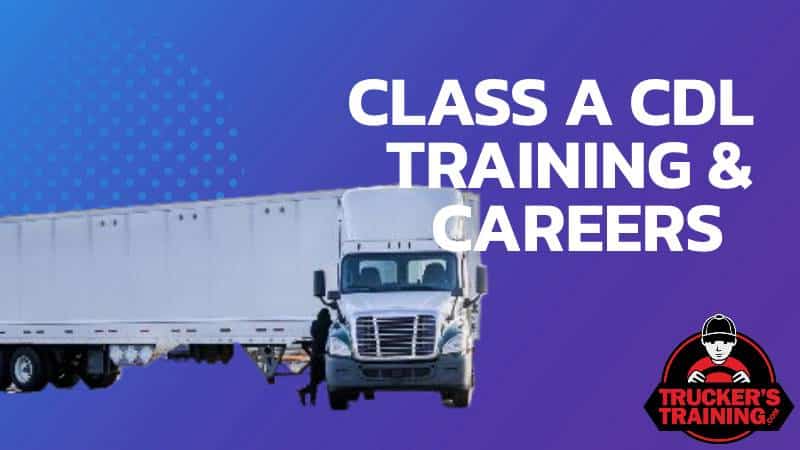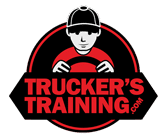
A career as a professional truck driver can be exciting and rewarding. You get to travel the country, be your own boss, and earn a solid living. But make no mistake, it requires dedication and hard work.
Before you hit the open road, you’ll need to go through training to get your CDL. You’ll learn all about safely operating a tractor-trailer, cargo securement, and industry regulations. Then you have to pass a series of tests to earn your license. Once you have your CDL in hand, you can start applying to trucking companies to launch your new career.
Driving an 18-wheeler is a big responsibility, but for the right person, it can be a dream job. If you’re up for the challenge of this demanding yet rewarding career, getting your Class A CDL is the first step to hitting the highway.
What Is a Class A CDL License?
A Class A CDL allows you to drive any combination of vehicles with a gross combination weight rating of 26,001 or more pounds provided the towed unit is heavier than 10,000 pounds.
The following vehicles are available to you: Tractor-trailers or semis (also called 18-wheelers), truck and trailer combinations (also known by the names Big Rig, Trucks with Trailers, and Flatbeds), Livestock carriers, flatbeds, tanks, etc. You can also drive most Class B or Class C vehicles depending on the endorsement.
Endorsements and Restrictions
To haul certain types of cargo, you’ll need extra endorsements on your CDL. Endorsements are add-ons that give you permission to transport hazardous materials (HazMat), double or triple trailers (doubles/triples), tankers, or passengers (bus).
Restrictions limit what you can drive. Endorsements and restrictions are noted on your CDL under the “endorsements” and “restrictions” sections. To add an endorsement, you’ll need to pass a knowledge test. Some also require a skills test.
How to Get a Class A CDL?
To obtain a Class A CDL, you’ll need to meet the truck driving age limit and pass knowledge and driving skills tests.
First, make sure you meet the minimum age requirement of usually 18 years old to drive within your state. To drive across state lines, you have to be 21 years old.
You’ll also need a clean driving record and pass medical requirements. Next, study the CDL manual for your state to prepare for the general knowledge written test. This covers basic vehicle control, safety, and inspection procedures.
Then, schedule and pass your CDL knowledge tests at your local DMV. These include the general knowledge test, along with any necessary endorsement tests like doubles/triples, tank vehicles, or hazardous materials. Finally, pass a CDL skills test to demonstrate you can safely operate a Class A vehicle. Once you pass all required tests, you can apply for your Class A CDL at your local DMV.
However, prior to taking their driving test, all drivers applying for Class A and Class B CDLs for the first time on or after Feb. 7, 2022, will need to complete introductory driver training (also known as Entry-level Driver Training (ELDT)) at a training provider registered with the state. Some States have requirements that go beyond Federal requirements.
Class A CDL ELDT Curriculum Requirements
| Class A CDL ELDT Curriculum Requirements | ||||||
|---|---|---|---|---|---|---|
| Theory | ||||||
| Basic Operation | Orientation | |||||
| Control Systems/Dashboard | ||||||
| Pre- and Post-Trip Inspections | ||||||
| Basic Control | ||||||
| Shifting/Operating Transmissions | ||||||
| Backing and Docking | ||||||
| Coupling and Uncoupling | ||||||
| Safe Operating Procedures | Visual Search | |||||
| Communication | ||||||
| Distracted Driving | ||||||
| Speed Management | ||||||
| Space Management | ||||||
| Night Operation | ||||||
| Extreme Driving Conditions | ||||||
| Advanced Operating Practices | Hazard Perception | |||||
| Skid Control/Recovery, Jackknifing, | ||||||
| and Other Emergencies | ||||||
| Railroad-Highway Grade Crossings | ||||||
| Vehicle Systems and Reporting Malfunctions | Identification and Diagnosis of Malfunctions | |||||
| Roadside Inspections | ||||||
| Maintenance | ||||||
| Non-Driving Activities | Handling and Documenting Cargo | |||||
| Environmental Compliance Issues | ||||||
| Hours of Service Requirements | ||||||
| Fatigue and Wellness Awareness | ||||||
| Post-Crash Procedures | ||||||
| External Communications | ||||||
| Whistleblower/Coercion | ||||||
| Trip Planning | ||||||
| Drugs/Alcohol | ||||||
| Medical Requirements | ||||||
| Behind-the-Wheel (BTW) Range | Vehicle Inspection Pre-Trip/Enroute/Post-Trip | |||||
| Straight Line Backing | ||||||
| Alley Dock Backing (45/90 Degree) | ||||||
| Off-Set Backing | ||||||
| Parallel Parking Blind Side | ||||||
| Parallel Parking Sight Side | ||||||
| Coupling and Uncoupling | ||||||
| Behind-the-Wheel (BTW) Public Road | Vehicle Controls Including: Left Turns, Right Turns, Lane Changes, Curves at Highway Speeds, and Entry and Exit on the Interstate or Controlled Access Highway | |||||
| Shifting/Transmission | ||||||
| Communications/Signaling | ||||||
| Visual Search | ||||||
| Speed and Space Management | ||||||
| Safe Driver Behavior | ||||||
| Hours of Service (HOS) Requirements | ||||||
| Hazard Perception | ||||||
| Railroad (RR)-Highway Grade Crossing | ||||||
| Night Operation | ||||||
| Extreme Driving Conditions | ||||||
| Skid Control/Recovery, Jackknifing, and Other Emergencies | ||||||
| Source: FMCSA |
Class A CDL Training
To obtain a Class A CDL, you’ll need to complete a training program at a truck driving school. These schools offer programs that teach you how to safely operate a tractor-trailer. The typical Class A CDL training program includes both classroom training as well as hands-on practice behind the wheel with an experienced instructor. Getting the proper training and education is key to starting a successful career as a Class A truck driver.
- Classroom Training
Classroom training is a key part of getting your CDL. In a classroom setting, you’ll learn about general trucking knowledge, safety procedures, and transportation regulations.
- Driving Range
The most important part of getting your CDL is practicing driving a large commercial vehicle. CDL training schools have practice driving ranges where you can get behind the wheel of a semi-truck and start logging hours.
Driving time is key. In order to qualify for a CDL, you’ll need a certain number of hours of practice driving time – typically 30-80 hours. The more time you spend driving, the more comfortable and confident you’ll feel operating a big rig.
- Road Training and Testing
Now it’s time to prepare for the road test to earn your Class A CDL. Your truck driving school will provide vehicles for you to practice the skills needed to pass the CDL road test. Work with your instructor to log the required hours of supervised driving time.
With diligent preparation and experience behind the wheel, you’ll gain the skills and confidence to pass the CDL road test.
Where to Begin Class A CDL Training?
There are a few options for obtaining your Class A commercial driver’s license (CDL) training. Truck driving schools (private and community colleges), and trucking company-sponsored training are popular choices.
Truck driving schools offer training programs focused specifically on preparing you to earn a Class A CDL. Many trucking companies and private fleets hire graduates of reputable truck driving schools. Some schools offer financing and job placement assistance.
Private CDL training programs are run by independent instructors. While some are reputable, do thorough research to ensure the quality of instruction and job placement rates.
Trucking company-sponsored CDL training allows you to earn your CDL at no upfront cost. In exchange, you agree to work for the company for a certain period of time after graduating. This can be a good option if you need experience to start your trucking career.
No matter which path you choose, look for a program focused on safety, with modern equipment, experienced instructors, and a high success rate for students passing the CDL road test.
Class A CDL Careers
With a Class A CDL, you’ll have access to many promising careers. You’ll have many job opportunities in the trucking and transportation industries. Here are some of the most common jobs:
- Long-haul truck driver: Transport goods over long distances across states or even the entire country. Requires spending days or weeks on the road away from home. Pays well but demanding work.
- Local truck driver: Haul cargo within a local area. Drive smaller trucks and are home every day. Work for delivery services, beverage companies, or trucking firms.
- Heavy equipment operator: Operate cranes, bulldozers, front-end loaders, and excavators. Work in construction moving materials and digging at construction sites. Requires additional certifications to operate heavy equipment.
- Bus driver: Transport people instead of goods. Drive city buses, school buses, charter buses, or shuttle buses. Need a passenger transport endorsement on your CDL.
- Waste collection driver: Collect waste, recycling, and compost for residential and commercial clients. Drive garbage trucks and other waste collection vehicles. Physically demanding but essential work.
Beyond driving, you may want to look into transportation and logistics roles like dispatcher, fleet manager, or safety supervisor. With additional experience, you can become an independent owner-operator, purchasing your own truck and hauling freight as an independent contractor. The job opportunities are vast, and with a Class A CDL, the road ahead can lead to a long and successful career.
How Much Do CDL Class A Jobs Pay?
On average, you can expect to earn over $84,000 per year as a Class A CDL driver. The actual pay will depend on factors like:
- Years of experience.
- The type of cargo. Hauling hazardous materials or oversized loads typically pays the most.
- Location and demand. Salaries are often higher in cities and areas where there is a shortage of drivers.
- Company and benefits. Large trucking companies and private fleets typically offer the highest pay and best benefits.
- Flexibility. Local routes and dedicated runs usually pay less than over-the-road (OTR), long-haul driving jobs.
Benefits of a Class A CDL Job
A career as a Class A CDL driver comes with many benefits.
As a truck driver, you often have a flexible work schedule. You may be on the road for days or weeks at a time but then have extended time off to spend with family and friends. Some drivers enjoy traveling and visiting new places as part of the job.
Experienced Class A CDL drivers, especially those in specialized fields like hazardous materials transport, can make a decent salary. As the demand for goods continues to increase, the need for qualified truck drivers is high. Many companies offer sign-on bonuses, benefits, and opportunities for pay raises over time.
The trucking industry has a shortage of drivers, so job security and opportunities are often plentiful for Class A CDL holders. As long as goods need to be transported, truck drivers will be in demand.
A Class A CDL is a valuable credential that can open up opportunities even outside of truck driving. Skills like safely operating a large commercial vehicle, following strict safety standards, efficiently navigating routes, and delivering goods on time are useful across many industries. Your CDL can be a stepping stone to other roles in logistics, distribution, and transportation.
Conclusion
So there you have it: everything you need to know to get started with a promising career as a Class A CDL truck driver. While the training and licensing process may seem complicated, if you take it step by step you’ll be out on the open road in no time. The job isn’t easy, but for the right person, the rewards of a career as a truck driver can be huge—not just the pay and benefits but the freedom of the road and being part of an industry that keeps our country moving.
TruckersTraining.com provide information, tools and resources to potential truck drivers in the U.S. We hope that you can use the content on the site to help you decide if want to drive trucks for a living.
